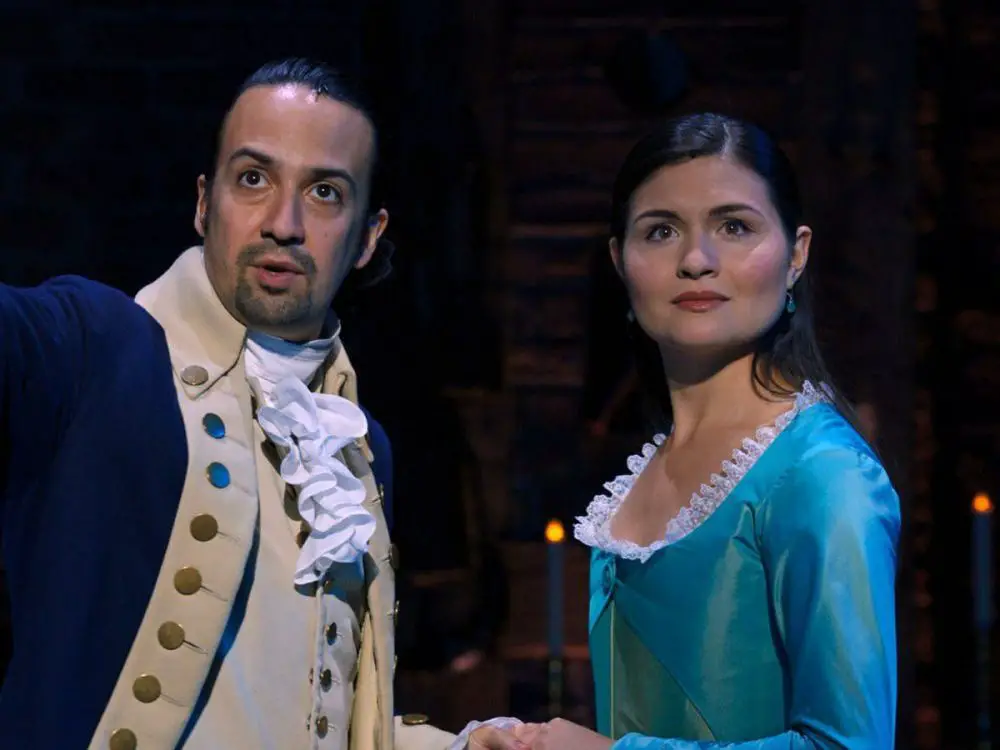Six years ago, Lin-Manuel Miranda took Broadway by storm with “Hamilton.” Since then, people have remained captivated by both the production and Miranda’s work as a whole. With the recent release of “In the Heights,” Miranda’s name has once again become the topic of many a conversation. With his name now attached to two major works, it is a good time to look at the themes that characterize his work — as well as why “Hamilton” aged as gracefully as the forgotten dairy product in the back of your refrigerator.
It is important to note that looking at “Hamilton” from the perspective of a person living in 2021, the musical has nearly as many strengths as it does weaknesses — one of these strengths being that the production made household names out of struggling actors of color. Daveed Diggs and Leslie Odom Jr. are excellent examples of how this musical propelled people into fame that they had not thought possible. “Hamilton” is also significant because it gave actors of color the chance to act in roles that they never would have had the chance to otherwise (the list of Black actors that have played George Washington is rather short, after all).
Perhaps the greatest strength of this production is its unprecedented representation. Prior to “Hamilton,” only “The Color Purple” and a few other productions allowed for such a diverse cast, especially when it came to the representation of Black people. It is ironic, then, that the representation in “Hamilton” has acted both to its benefit as well as its detriment.
While the representation found in “Hamilton” contributed to the strength of the play, it is also a definite weakness. There is the awkward matter that by casting people of color as the Founding Fathers, the oppressed are working to actively sanitize the legacy of their oppressors. The idea is so obvious, yet it was so far from most people’s minds when the production premiered. However, such a lack of awareness is suitable for a 2015 audience.
While the play was making its way to Broadway, the country had yet to experience the divisiveness of the Trump administration, been forced to acknowledge the reality of the Black Lives Matter movement or suffer through a pandemic that seemingly had no end. The ability to look back on and critique “Hamilton” is one that was hard-earned through national trauma. Disney can be credited with giving people the chance to critique the production against the backdrop of national crisis; the company did, after all, conveniently stream “Hamilton” on Disney+ on July 3, 2020, during the height of the Black Lives Matter protests — something that perhaps still felt awkward and tone-deaf for July 4th.
Another simultaneous strength and weakness of “Hamilton” is the conversations it started. The hallmark of a quality production is its ability to generate discussion, and “Hamilton” is no exception. One such conversation connected Alexander Hamilton’s story to that of the average immigrant — yes, Hamilton emigrated from the Caribbean to the United States.
The first song on the “Hamilton” soundtrack makes his story sound rather inspiring but glosses over a crucial aspect; despite his status as an immigrant, Alexander Hamilton was a white man. His whiteness played a decisive role in his opportunity to shape the nation at its inception. Without it, it is unlikely he would have been as successful as he was. And of course, this had nothing to do with the actual capabilities of people of color during this time, and everything to do with the aggressive racism that shaped the country in its infancy — there is a reason why none of the Founding Fathers were people of color.
Another conversation revolved around the soundtrack. With a predominantly non-white cast and a soundtrack that mostly consists of rap music, some people asked if the musical upheld the stereotype that Black people could only relate to or create music that fit into the genre of rap. Frankly, this discussion seemed to mostly take place among older generations. Within Gen Z, it would seem that most people have moved past this stereotype, if for no other reason than the fact that rap music is now enjoyed by so many different groups. Still, this stereotype is one that younger generations of Black people may recall their parents or grandparents discussing.
Regardless of the conversations that sprung up around the initial release of “Hamilton,” Miranda’s recent projects have reflected a trend in his work, including a pattern of awkwardly handling race when it comes to representing people of color on stage and screen. Audiences can see such awkwardness clearly in the movie version of “In the Heights.” While the representation of the Latin American community in the movie is amazing, it is clear that the Latinx actors invited to perform were partially chosen for their lighter skin tone.
Viewers of the movie were quick to notice the colorism within the movie — as well as the irony: In reality, Washington Heights is the home of many Afro-Latinx as well as Latinx with fairer skin and many people in between. The failure of this film to accurately depict the vast array of people within the Latin American community is yet another example of Miranda’s clumsy handling of race and color.
The work of Lin-Manuel Miranda has prompted nearly as much praise as it has grief. At the end of the day, his work breaks into territory that is almost completely uncharted. His commitment to people of color is clear throughout his work despite the awkward way he may go about executing it. The improvements that can be made are easy to see because they are part of a new era of theater and film — one in which the accurate representation of people of color will, at some point, become second nature.

















